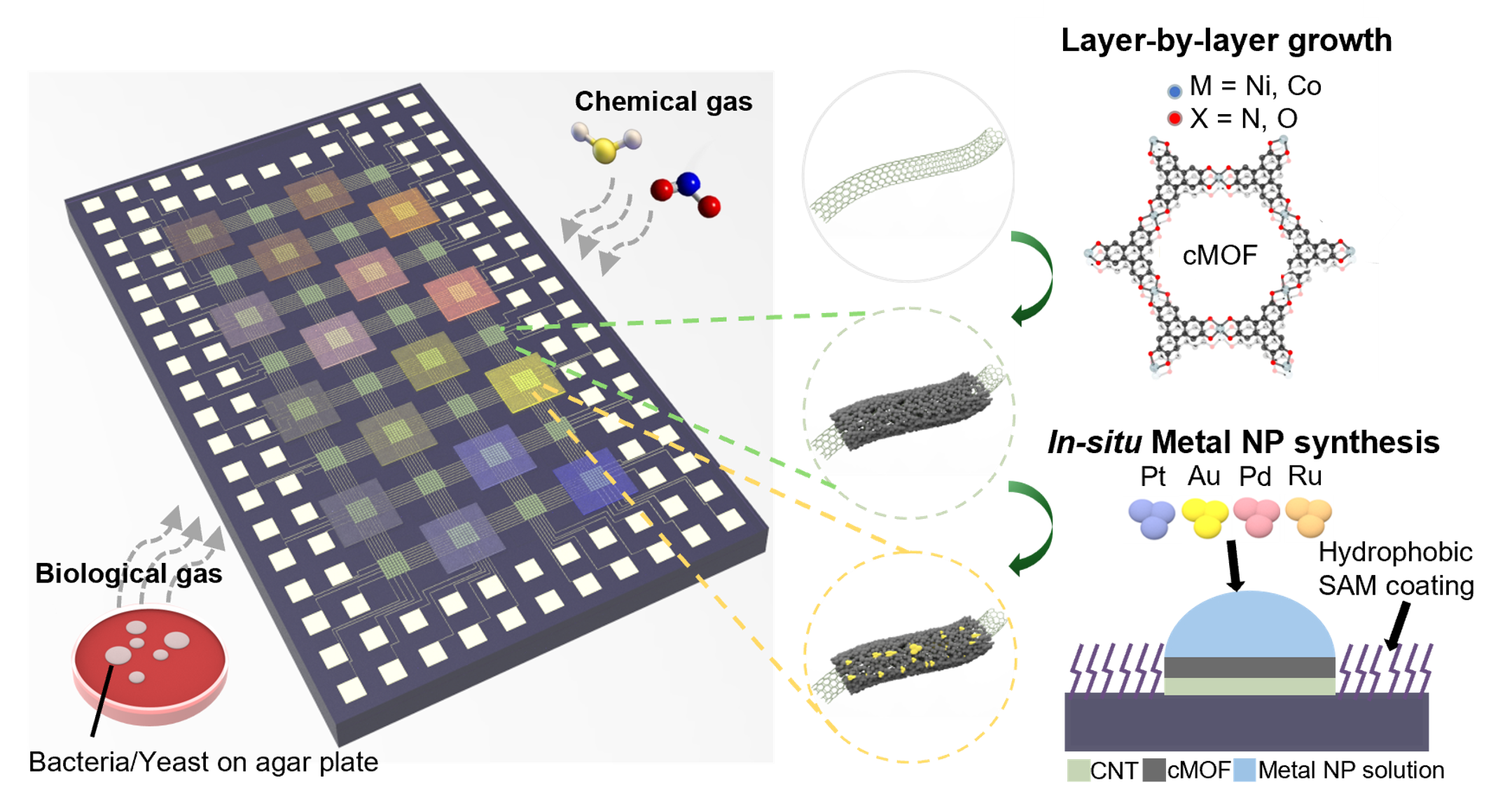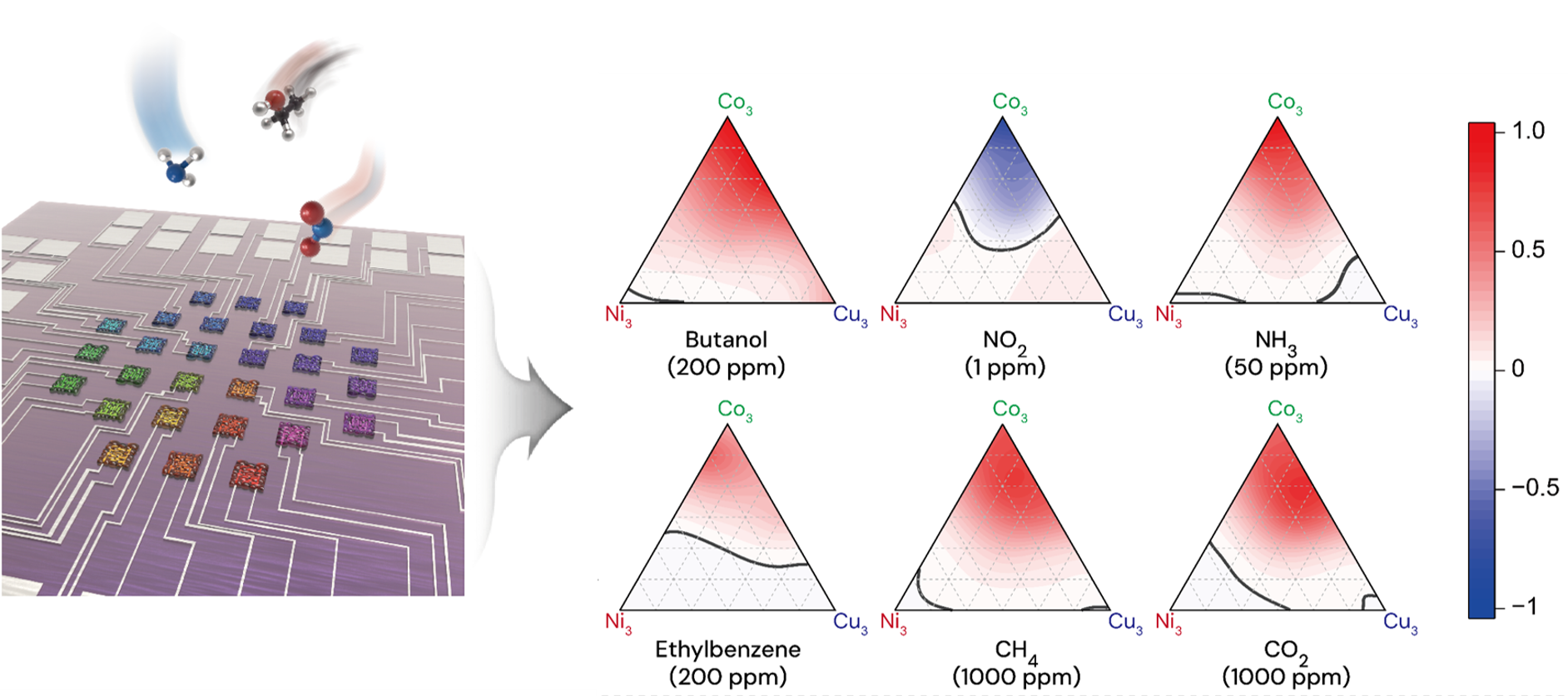Gas Sensing
Over the past decades, semiconductor technology has advanced significantly, particularly in the form of integrated circuits. However, when it comes to gas classification, despite the strong industrial and practical demand for compact and integrated electronic gas sensors, we still rely on bulky instruments like gas chromatography. While extensive research has been conducted on effective chemical sensing platforms, several challenges remain. These include the complexity of integrating high-performance sensing materials, device-to-device variations due to the complex integration, non-linear response behavior, and interference from unwanted chemicals. By leveraging novel material compositions, exploring sensing mechanisms, and employing machine learning-based approaches, our group aims to develop novel IC-based chemical sensors that address these challenges.
The potential applications of integrated circuit (IC) based chemical sensors are vast, ranging from bacterial identification and explosive detection to air quality monitoring. One of the most promising ways for implementing IC-based sensors for gas classification is to construct sensor arrays with various sensing materials, measure gas responses, and generate unique response patterns for each chemical analytes. Here, we synergistically integrate carbon nanotube field effect transistors and conductive metal organic frameworks to achieve both high sensitivity and selectivity. Additionally, by synthesizing catalytic metal nanoparticles on top of it, we generate pattern for each gas analytes. To highlight the potential use of IC-based chemical sensor in medical application, we classify bacteria by analyzing the gases emitted from them.

Extensive research has been conducted to synthesize and utilize high-performance sensing materials with enhanced sensitivity and selectivity. However, relatively little attention has been given to studying their inherent non-linear responses to concentration variations. This indicates that even if a gas response pattern is generated at a certain concentration, the pattern may not be preserved at different concentrations. Here, we present a novel sensor based on conductive metal-organic frameworks (cMOFs) and demonstrate that each gas species exhibit unique response pattern like fingerprints. Importantly, the characteristic information of these unique patterns remains conserved despite changes in concentration. By using this linear information, we highlight the potential of strategic design of chemical sensor that can deconvolute gas mixtures – a longstanding challenge in the chip-based chemical sensing fields.

